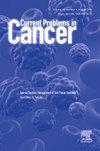hsa_circ_0008285:环状RNA可能作为卵巢癌的生物标志物
IF 2.3
4区 医学
Q3 ONCOLOGY
引用次数: 0
摘要
液体活检已成为一种非侵入性的癌症诊断和预后工具。环状rna (circRNAs)由于其稳定性和在癌症生物学中的调节作用而成为有前途的生物标志物。本研究旨在评估hsa_circ_0008285作为卵巢癌(OC)诊断生物标志物的潜力。本研究分析了98例卵巢癌患者、42例多囊卵巢综合征(PCO)患者、35例子宫内膜异位症患者和93例健康供体的102例配对肿瘤和邻近正常组织样本,以及血浆。采用Illumina HiSeq 2000高通量测序技术在OC组织样本中鉴定差异表达的circRNAs (n = 4)。采用定量实时聚合酶链反应(qRT-PCR)验证hsa_circ_0008285的表达。采用受试者工作特征(ROC)分析评估诊断效果和敏感性。高通量测序发现hsa_circ_0008285是表达上调最显著的circRNA (P = 0.000012)。qRT-PCR结果证实,与健康对照组相比,hsa_circ_0008285在OC组织和血浆中的表达增加(P <;0.0001)。ROC分析显示曲线下面积为0.74 (95% CI: 0.6567-0.8306, P <;0.0001),表明诊断潜力中等。值得注意的是,hsa_circ_0008285和CA_125联合检测提高了诊断的特异性和敏感性。相关分析显示,hsa_circ_0008285表达上调与肿瘤大小、分化和T分期相关。这些发现表明,hsa_circ_0008285有望作为一种非侵入性的OC诊断生物标志物,在临床实践中具有潜在的应用前景。本文章由计算机程序翻译,如有差异,请以英文原文为准。
hsa_circ_0008285: Circular RNA with potential as a biomarker in ovarian cancer
Liquid biopsy has emerged as a non-invasive cancer diagnosis and prognosis tool. Circular RNAs (circRNAs) have become promising biomarkers due to their stability and regulatory roles in cancer biology. This study aimed to evaluate the potential of hsa_circ_0008285 as a diagnostic biomarker for ovarian cancer (OC). 102 paired cancer and adjacent normal tissue samples, along with plasma from 98 OC patients, 42 polycystic ovary syndrome (PCO) patients, 35 endometriosis patients, and 93 healthy donors, were analyzed. Differentially expressed circRNAs were identified using Illumina HiSeq 2000 high-throughput sequencing in OC tissue samples (n = 4). Quantitative real-time polymerase chain reaction (qRT-PCR) was employed to validate the expression of hsa_circ_0008285. Diagnostic efficacy and sensitivity were assessed using receiver operating characteristic (ROC) analysis. High-throughput sequencing identified hsa_circ_0008285 as the most significantly upregulated circRNA (P = 0.000012). qRT-PCR results confirmed increased expression of hsa_circ_0008285 in OC tissues and plasma compared to healthy controls (P < 0.0001). ROC analysis demonstrated an area under the curve (AUC) of 0.74 (95 % CI: 0.6567–0.8306, P < 0.0001), indicating moderate diagnostic potential. Notably, the combined detection of hsa_circ_0008285 and CA_125 improved diagnostic specificity and sensitivity. Correlation analysis revealed that hsa_circ_0008285 upregulation was associated with tumor size, differentiation, and T stage. These findings suggest that hsa_circ_0008285 holds promise as a non-invasive biomarker for the diagnosis of OC, with potential applications in clinical practice.
求助全文
通过发布文献求助,成功后即可免费获取论文全文。
去求助
来源期刊

Current Problems in Cancer
医学-肿瘤学
CiteScore
5.10
自引率
0.00%
发文量
71
审稿时长
15 days
期刊介绍:
Current Problems in Cancer seeks to promote and disseminate innovative, transformative, and impactful data on patient-oriented cancer research and clinical care. Specifically, the journal''s scope is focused on reporting the results of well-designed cancer studies that influence/alter practice or identify new directions in clinical cancer research. These studies can include novel therapeutic approaches, new strategies for early diagnosis, cancer clinical trials, and supportive care, among others. Papers that focus solely on laboratory-based or basic science research are discouraged. The journal''s format also allows, on occasion, for a multi-faceted overview of a single topic via a curated selection of review articles, while also offering articles that present dynamic material that influences the oncology field.
 求助内容:
求助内容: 应助结果提醒方式:
应助结果提醒方式:


